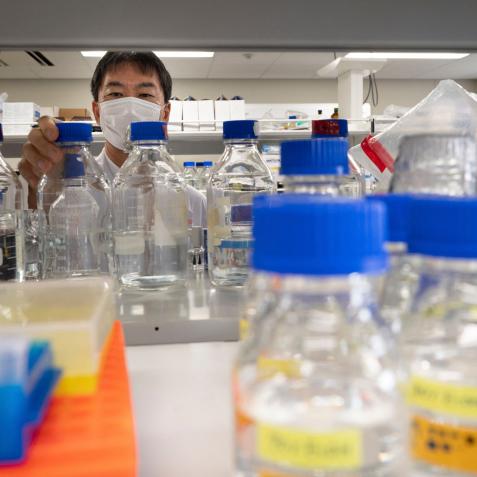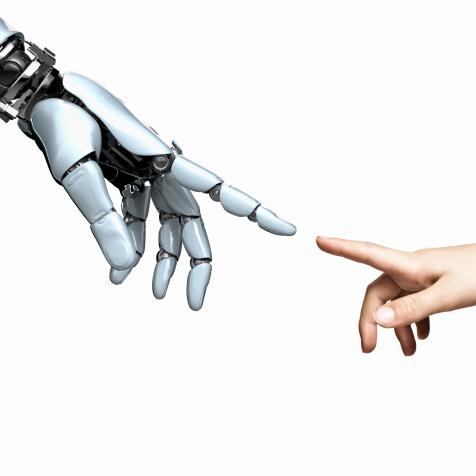
Stephen McCarthy
Robot Army: Caring Technology Enters Mass Production to Fight Pandemic
Social robots have often been promoted as a way to give the sick and the elderly the support they lack. Now a Hong Kong robotics company wants to create an army of caring robots to provide comfort, solace, and healthcare to people isolated during the coronavirus pandemic.
Meet Sophia
Hanson Robotics, led by founder and CEO David Hanson, says it plans to mass-produce its social humanoid robot Sophia in the first half of 2021. Three other robots will be manufactured to help people cope with the pandemic’s effects, said Hanson, and to inspire a future “where machines might become our friends.”
Sophia is being purposed for caregiver and customer service duties, but first achieved international recognition at the South by Southwest Festival in 2016, going on to be awarded a role as the United Nations’ first non-human innovation champion.
“Many of my previous robots were hand-built,” said Hanson. “However, now we have begun scaling the manufacturing of Sophia so we can make hundreds and thousands of units, and use this as the foundation for many other kinds of characters."
The firm will develop a dedicated healthcare robot called Grace, but is also targeting industries including retail and air travel. “Sophia and Hanson [an artificial intelligence (AI) program] are unique by being so human-like,” added Hanson. “That can be so useful during these times where people are so terribly lonely and socially isolated.”
Saying 'Thank You' to AI

DIBYANGSHU SARKAR
The humanoid robot Sophia, developed by Hong Kong based company Hanson Robotics, appears on stage in front of students and other professionals during a meeting session organized about artificial intelligence.
Robots with AI abilities can engage in and understand conversation through natural language processing. Humanoid robots, or androids, also use technology that enables them to mimic human facial expressions and take part in everyday interactions, meaning they could become readily accepted in people’s homes and workplaces.
Engineers are busy adding functionality that will allow robots to take temperature or measure pulse. Sophia also has the ability to lead an exercise program, which is likely to give the unit mass appeal.
Technologists and roboticists also say that robots are perfectly positioned to take up duties that are either dull or where there are risks for humans, such as disinfecting hospitals or public spaces, food and medication delivery, screening for disease, and conducting lab tests.
Combining robots with AI and other agents–like chatbots or avatars–is seen as a way to manage situations like the coronavirus public health emergency in a safer and more efficient way–from distributing information to advanced molecular biology and drug development.
As automation is taken up more widely in healthcare then some of the roles most likely to be replaced robotically include one-to-one care and administrative jobs. Care workers, nursing assistants and pharmaceutical technician jobs appear most at risk.
Robots on the Rise
One of the upward trends during the pandemic is automation, with accelerated robotics programs in many industries. Executives’ attitudes look to have shifted from reducing costs through automation to gaining a competitive advantage.
Use of robots was in fact on the rise before the impact of coronavirus, with a jump of 32% in sales of professional service robots, totaling over $15 billion worldwide, between 2018 and 2019. Almost half (47%) were sales of medical robots.
Artificial Intelligence in Medicine: the Rise of the Digital Doctors
As AI technology becomes more sophisticated, we can expect them to be used more often in the world of human medicine and healthcare. But it is possible to create medical AIs that rapidly outperform doctors in certain tasks? Find out all the ways AI is helping the healthcare world.
But despite the outward appearance of robots like Sophia there are many, including leading AI scientists, who are not impressed with the level of technology on display. It is still too soon to start mass production, said social robotics expert Johan Hoorn, describing the current level of innovation as “feeble”.
CPUs that overheat, video display problems and other machine glitches make it unlikely that androids like Sophia will achieve world domination. The pandemic may make it easier to market robots, agrees Hoorn, but “It’s still too young in a sense.”



















